Armor in the Period of the Marshal
By Baron Eric St. Ledger (Mark Abbott)
William Marshal lived from around 1150-1220. This article will briefly discuss the armor of the the period, some hints on construction, and several ideas to make whatever kit you currently have, look more like something from Sir William's time.
Illustration A from the Maciejowski Bible shows a good overview of various armor styles of the late 12th and early 13th centuries. It clearly shows a variety of helmets, including great helms, kettle helms, and conical helms. It also shows various types of armors covering the body (mail, aketons, and coats of plates) and as well as several different shield styles. Interestingly, all these types of equipment were in use at the same time.
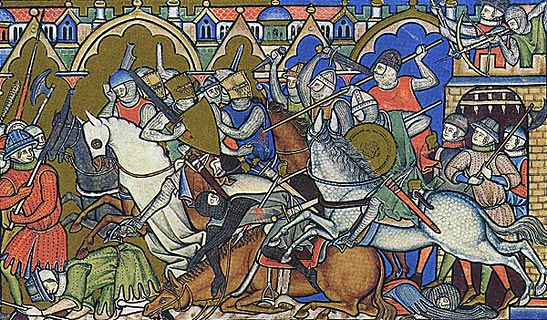
Illustration A: Maciejowski Bible, 1250
Body Armor
Mail – Mail hauberks (illustrations B and C) are the usual armor for the well-dressed knight in this period. They tended to wear a lot of mail - often covering themselves from the top of the head to down to their feet.
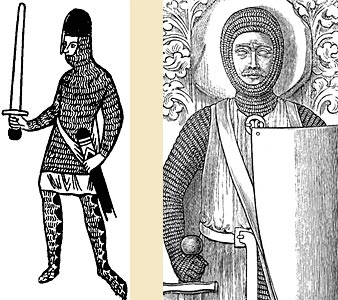
Illustration B |
Illustration C |
What if you have no mail and are planning on doing something else for the next two months? Fortunately, there are some other options.
Aketon – An aketon (Illustration D) is a padded outer garment that is basically a gambeson-like padded or quilted armor that need not have mail over it.
Some of these coats (such as the one in illustration D) have raised collars, while others do not. The ones on the left in the Maciejowski Bible picture (illustration A) seem to have some sort of outside studs visible, probably fastening some sort of leather or steel reinforcement on the inside, but you could use just about anything to get the look.
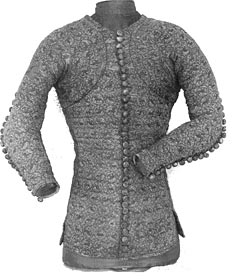 Illustration D: Aketon
Illustration D: AketonCoat-of plates – Coats of plates, (illustration E), which as the name implies are essentially coverings with plates fastened to the inside, were also common during the Marshal’s period.
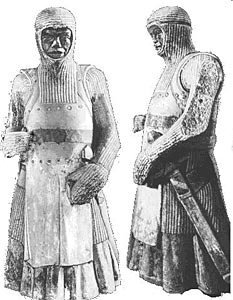 Illustration E: Coat of Plates
Illustration E: Coat of PlatesCoats of plates are easy to make (see illustration F). The leather is the big expense but the plates are easy to cut and the coats are fairly simple to assemble.
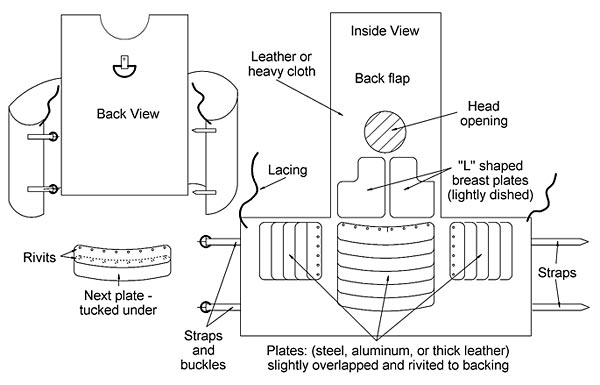
Illustration F: Wisby Coat pattern based on a series of 25 coats found in the mass graves from the Battle of Wisby.
(Click image for larger version.)
Surcoat – Surcoats start to come into style during this period (see the illustration J), likely as a fashion style brought back from by crusaders who had need to keep their armor out of the sun. Surcoats are found varying from simple one-color garments, to parti-color garments, to fancier ones with heraldic charges.
A surcoat can cover up any type of armor and make it look appropriate for the 12th to 13th centuries. You can even use a padded surcoat as your body armor and be right in period.
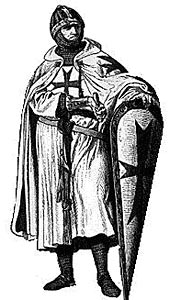 Illustration F: A Knight Templar in the heraldic surcoat of his order.
Illustration F: A Knight Templar in the heraldic surcoat of his order.Continued, Part II: Helmets

